Precancerous Spot on Face Is Crusty Again

Skin cancers -- including melanoma, basal prison cell carcinoma, and squamous prison cell carcinoma -- oftentimes kickoff as changes to your skin. They can be new growths or precancerous lesions -- changes that are non cancer just could become cancer over fourth dimension. An estimated twoscore% to 50% of fair-skinned people who live to be 65 will develop at to the lowest degree one pare cancer. Acquire to spot the early alert signs. Skin cancer can be cured if it's constitute and treated early.
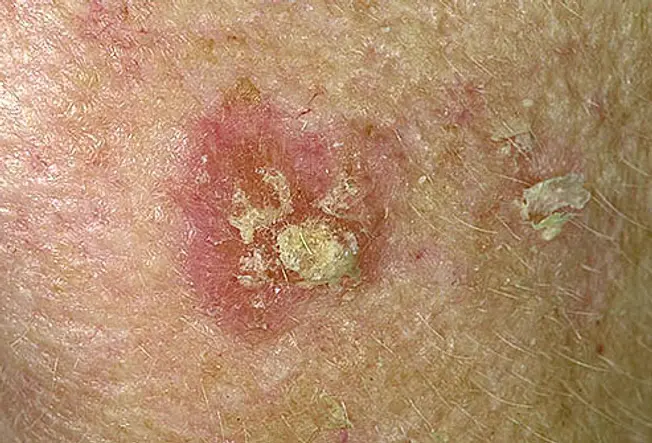
These small-scale, scaly patches are caused by too much sunday, and usually occur on the head, neck, or hands, just can be found elsewhere. They tin can be an early warning sign of peel cancer, simply it'south hard to tell whether a particular patch will continue to change over time and become cancerous. Most do non, but doctors recommend early on treatment to prevent the development of squamous cell skin cancer. Fair-skinned, blond, or scarlet-haired people with blueish or green eyes are most at risk.
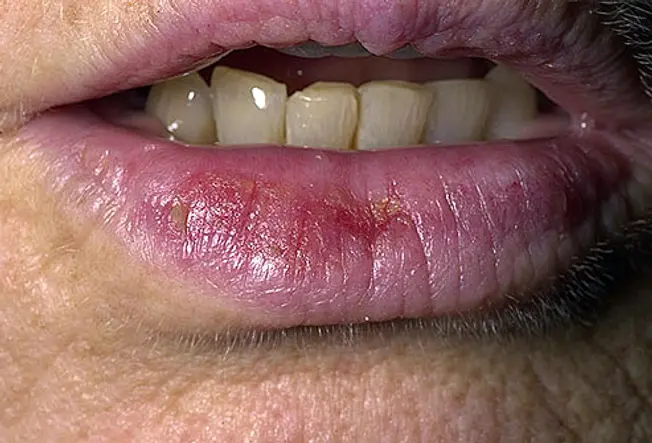
Related to actinic keratosis, actinic cheilitis is a precancerous condition that usually appears on the lower lips. Scaly patches or persistent roughness of the lips may be present. Less mutual symptoms include swelling of the lip, loss of the abrupt border between the lip and peel, and prominent lip lines. Actinic cheilitis may evolve into invasive squamous prison cell carcinoma if not treated.
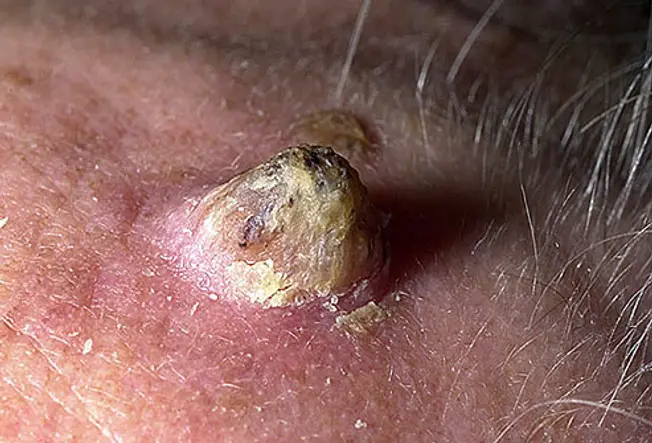
The cutaneous horn appears as a funnel-shaped growth that extends from a red base on the peel. Information technology is composed of compacted keratin (the same poly peptide in nails). It is a specialized type of actininc keratosis. The size and shape of the growth can vary considerably, merely near are a few millimeters in length. Squamous jail cell carcinoma can be found at the base. Information technology normally occurs in fair-skinned elderly adults with a history of significant lord's day exposure.
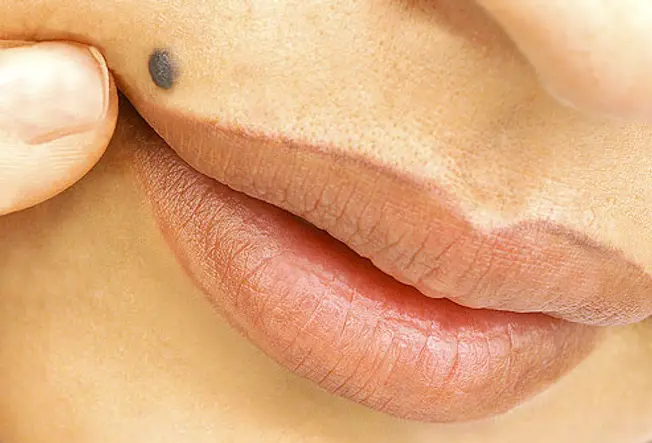
A mole (nevus) is a benign growth of melanocytes, cells that gives pare its color. Although very few moles go cancer, aberrant or atypical moles can develop into melanoma over time. "Normal" moles tin can announced flat or raised or may begin apartment and become raised over time. The surface is typically smooth. Moles that may have changed into skin cancer are frequently irregularly shaped, incorporate many colors, and are larger than the size of a pencil eraser. Nearly moles develop in youth or immature machismo. It's unusual to acquire a mole in the adult years.

Singular moles are not cancer, but they can become cancer. They tin be establish in sun-exposed or sun-protected areas of the body. Atypical moles may be larger (one-quarter inch across or larger) and more irregular in shape, with notched or fading borders. They may exist apartment or raised or the surface polish or rough. They are typically of mixed color, including pink, blood-red, tan, and chocolate-brown.
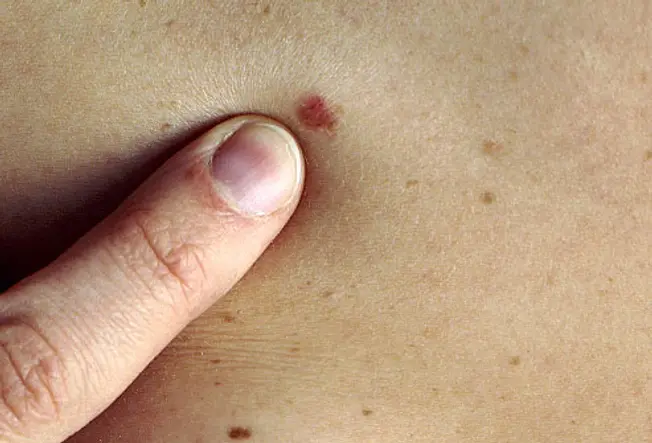
Near moles on a person's body expect like to one another. A mole or freckle that looks dissimilar from the others or that has any characteristics of the ABCDEs of melanoma should be checked by a dermatologist. It could be cancerous. The ABCDEs are important characteristics to consider when examining your moles or other pare growths, so learn them in the slides to come.
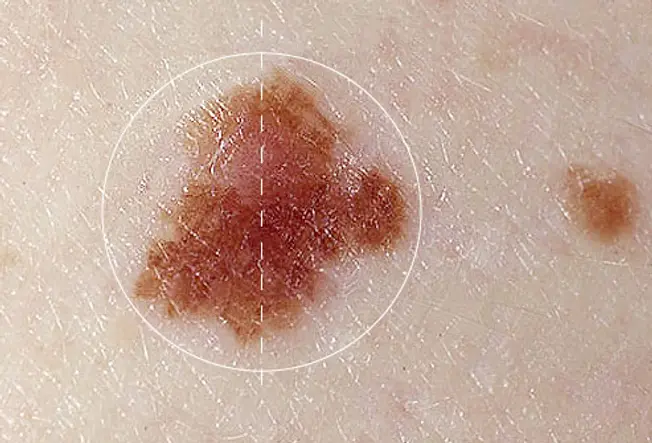
Disproportion means one half of a mole does non match the other half. Normal moles are symmetrical. When checking your moles or freckles, depict an imaginary line through the middle and compare the two halves. If they practice not look the same on both sides, have it checked by a dermatologist.
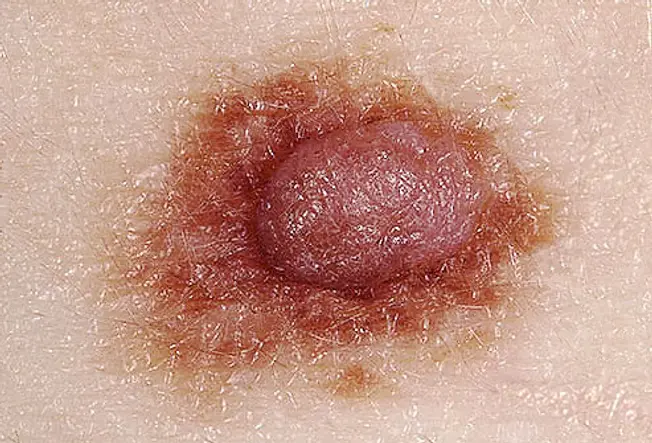
If the border or edges of the mole are ragged, blurred, or irregular, have it checked by a dermatologist. Melanoma lesions ofttimes have uneven borders.
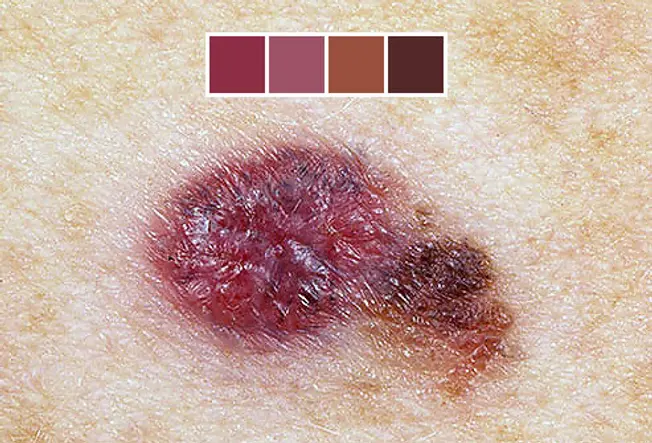
A mole that does not have the same color throughout or that has shades of tan, brown, black, blue, white, or carmine is suspicious. Normal moles are usually a single shade of color. A mole of many shades or that has lightened or darkened should be checked by a doctor.

A mole is suspicious if the bore is larger than the eraser of a pencil.
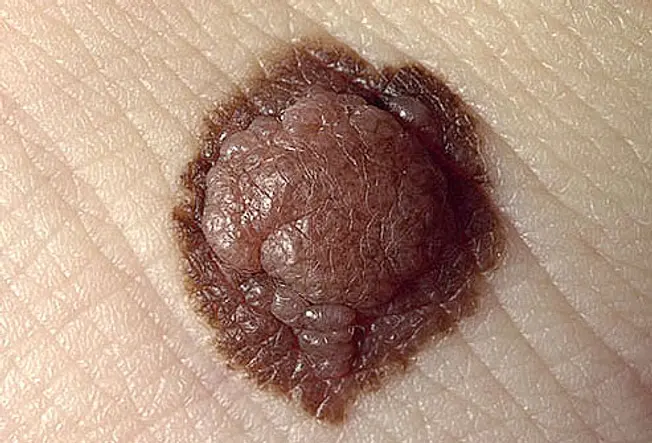
A mole that is evolving – shrinking, growing larger, changing colour, begins to itch or bleed – should be checked. If a portion of the mole appears newly elevated, or raised from the skin, have information technology looked at by a doctor. Melanoma lesions oft grow in size or change in height rapidly.

Examine your skin on a regular footing. A common location for melanoma in men is on the back, and in women, the lower leg. Simply check your entire body for moles or suspicious spots once a month. Get-go at your caput and work your way down. Bank check the "hidden" areas: between fingers and toes, the groin, soles of the feet, the backs of the knees. Check your scalp and neck for moles. Employ a handheld mirror or inquire a family fellow member to aid y'all look at these areas. Be particularly suspicious of a new mole. Take a photo of moles and engagement it to help you monitor them for alter. Pay special attention to moles if you're a teen, significant, or going through menopause, times when your hormones may be surging.

If you find a mole or spot that has any ABCDE'south of melanoma -- or one that'south tender, itching, oozing, scaly, doesn't heal or has redness or swelling beyond the mole -- see a doctor. Your doctor may desire to remove a tissue sample from the mole and biopsy it. If plant to be malignant, the unabridged mole and a rim of normal skin effectually it volition exist removed and the wound stitched closed. Additional handling may be needed.
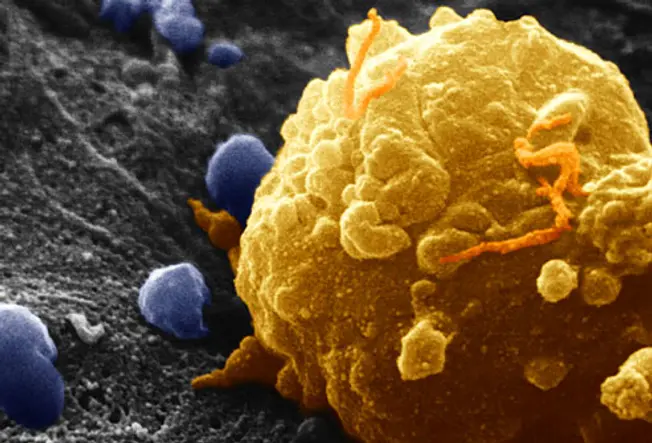
Malignant melanoma, especially in the later stages, is serious and treatment is difficult. Early on diagnosis and treatment can increase the survival charge per unit. Nonmelanoma peel cancers include basal cell carcinoma and squamous cell carcinoma. Both are common and are almost always cured when found early and treated. People who've had peel cancer once are at gamble for getting it once more; they should become a checkup at least once a yr.

Melanoma is non every bit common every bit other types of skin cancer, but information technology's the most serious and potentially deadly. Possible signs of melanoma include a change in the appearance of a mole or pigmented expanse. Consult a dr. if a mole changes in size, shape, or color, has irregular edges, is more than one color, is asymmetrical, or itches, oozes, or bleeds.
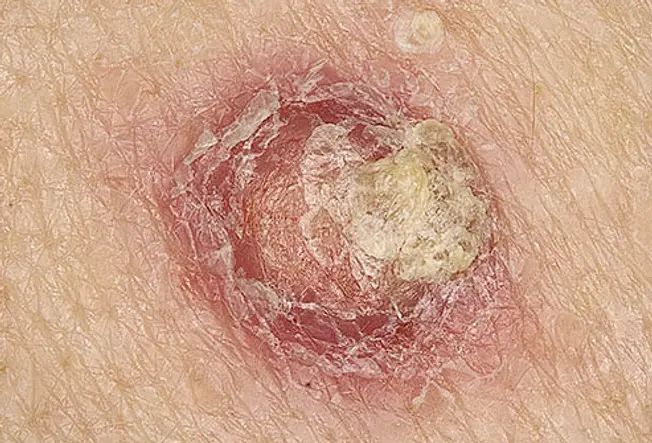
This nonmelanoma pare cancer may appear equally a firm red nodule, a scaly growth that bleeds or develops a crust, or a sore that doesn't heal. Information technology most often occurs on the nose, forehead, ears, lower lip, hands, and other sun-exposed areas of the body. Squamous cell carcinoma is curable if caught and treated early. If the skin cancer becomes more advanced, treatment will depend on the stage of cancer.
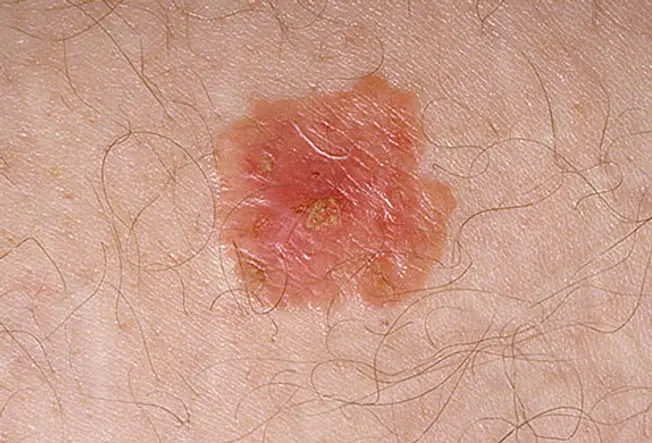
Bowen affliction is likewise called squamous cell carcinoma "in situ." It is a type of pare cancer that spreads outward on the surface of the pare. Past contrast, "invasive" squamous cell carcinomas can grow inward and spread to the interior of the body. Bowen disease looks like scaly, scarlet patches that may be crusted; it may be mistaken for rashes, eczema, fungus, or psoriasis.

Basal prison cell carcinoma is the near common and easiest-to-treat peel cancer. Because basal cell carcinoma spreads slowly, it occurs mostly in adults. Basal cell tumors can accept on many forms, including a pearly white or waxy crash-land, often with visible blood vessels, on the ears, neck, or face. Tumors tin also appear as a flat, scaly, mankind-colored or brown patch on the dorsum or chest, or more rarely, a white, waxy scar.

Uncommon types of pare cancer include Kaposi'south sarcoma, mainly seen in people with weakened immune systems; sebaceous gland carcinoma, an aggressive cancer originating in the oil glands in the skin; and Merkel cell carcinoma, which is normally constitute on dominicus-exposed areas on the head, neck, artillery, and legs but often spreads to other parts of the body.

Lord's day exposure is the biggest cause of peel cancer. Merely it doesn't explicate skin cancers that develop on skin not normally exposed to sunlight. Exposure to ecology hazards, radiation handling, and fifty-fifty heredity may play a role. Although anyone can go pare cancer, the risk is greatest for people who have:
- Off-white peel or light-colored eyes
- An affluence of large and irregularly-shaped moles
- A family unit history of skin cancer
- A history of excessive sun exposure or blistering sunburns
- Lived at high altitudes or with year-round sunshine
- Received radiation treatments

Limit your exposure to the sun'southward ultraviolet rays, peculiarly betwixt 10 a.m. and four p.m., when the sun's rays are strongest. While outdoors, liberally apply a broad spectrum sunscreen with an SPF of xxx or higher (don't forget the lips and ears!), wear a hat and sunglasses, and cover up with wear. And remember, if you notice changes to your skin such as a new growth, a mole irresolute appearance, or a sore that won't heal, run across a dr. right way.
Source: https://www.webmd.com/melanoma-skin-cancer/ss/skin-cancer-and-skin-lesions-overview
0 Response to "Precancerous Spot on Face Is Crusty Again"
ارسال یک نظر